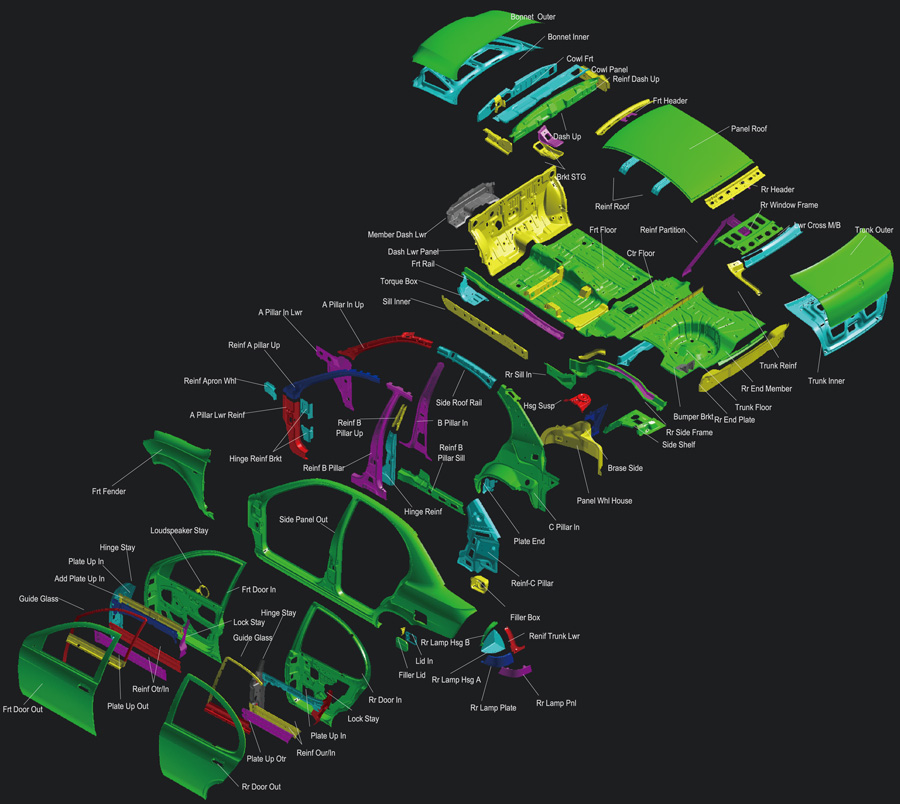Body stamping parts are generally divided into three categories, Class A, Class B and Class C parts
Class A: It mainly refers to external coverage parts and large inner boards, such as doors, side circumferences, top lids, door inner panels, etc.
Class B: It mainly refers to the beams and other structural parts on the body, such as A pillar, B -pillar, side surround beams, etc.
Class C: It mainly refers to relatively small size and relatively simple structures, such as door hinges, brackets, etc.
The outer coverage of a class A is directly exposed to people’s attention. Therefore, the highest requirements for such pieces are not only in terms of geometric size and accuracy, but also in terms of appearance quality. There are stamping defects on the parts, such as wrinkles, concave pits, and convex bags that affect the appearance quality of the entire vehicle.
The requirements of large -scale interior parts in appearance are not very strict, and are allowed to have defects such as slightly wrinkle, convex bags, and concave pits in local existence; there are different requirements for different parts of the parts in terms of geometric accuracy.
Class B’s parts molds are very suitable for production on multi -station pressing machines. Class B’s requirements for appearance quality are not very strict, and are allowed to have defects such as slight wrinkles, convex bags, and concave pits in local existence; there are different requirements for different parts of the system in terms of geometric accuracy.
The mold of Class C is suitable for production on double -doter pressing machines. Generally speaking, the size is relatively small and the structure is relatively simple. Although it is Class C, their role in the entire vehicle is still pivotal. If the geometric size of this type is not good, it will have a great adverse effect on the quality of the entire vehicle.
Post time: Mar-18-2023


